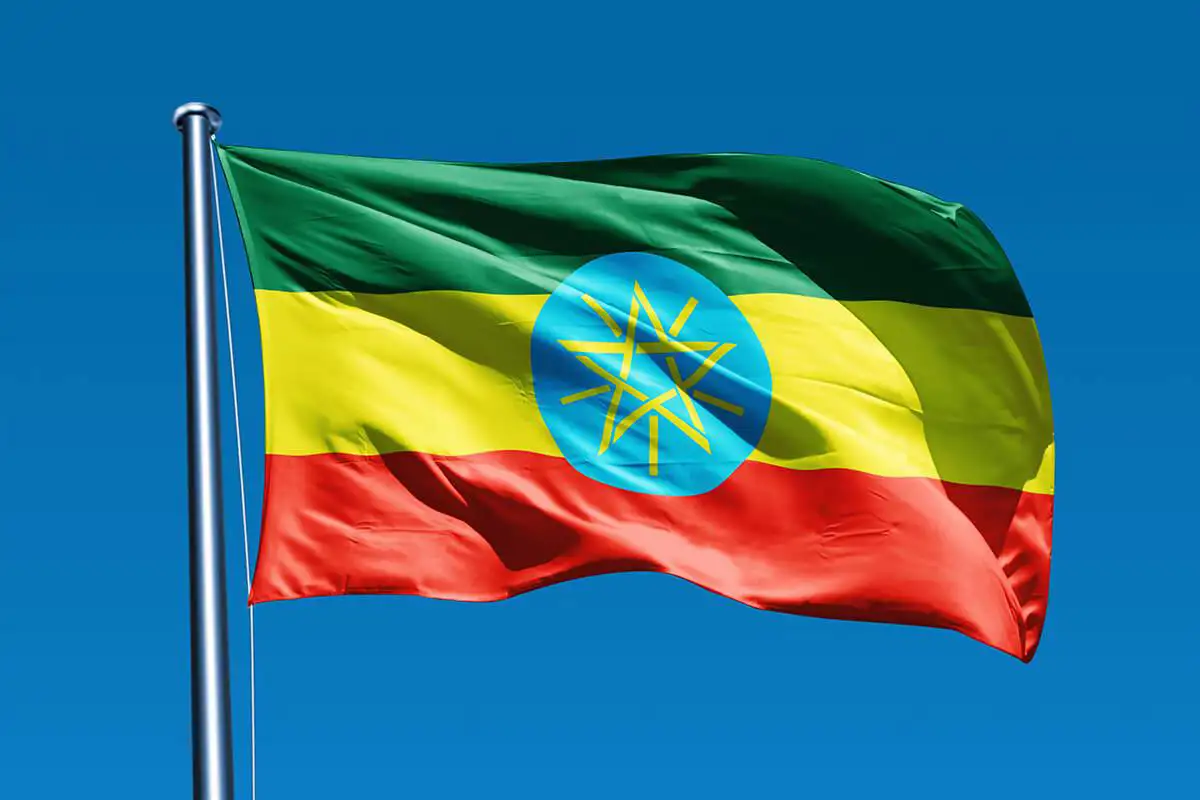By: Fitsum Getachew
In the past two or three years Addis Ababa has been undergoing exceptional rehabilitation and redevelopment activities intended to change its face so that it is clean and healthy suitable for a decent life for every resident. It is known that Addis is a relatively modern city especially in the context of the long story of Ethiopia where there are cities such as for instance Harar which is more than a thousand years old, Jimma in the south east and Gondar in the north etc.
Addis was founded some 130 years ago by Emperor Menelik II and his spouse Empress Taitu to make it the capital city of the country. History tells us that it was so decided for its strategic position and the availability of water springs and enough wood for various purposes. The emperor moved his capital city from a town called Menagesha some fifty km to the east of Addis with the new city denominated as ‘Addis Ababa’ meaning new flower with his hope of establishing a beautiful city that would look like a beautiful ‘new flower.
However, even if the capital city was intended to be a modern and beautiful city, it struggled to meet the expectations of many. Despite the increasing number of its inhabitants that it attracted from every corner of the country, it did not catch up with the modern times and it basically remained in the words of some critics a huge village’ because it lacked all the major ingredients of what a modern city is supposed to have.
There are many reasons why Addis could not catch up with the fast changing times. The first obstacle has always been the fact that it did not have a long term master plan to guide its growth and expansion. The city was let to sprawl in every direction haphazardly and roads were usually built after the habitations have been constructed. More over, vital infrastructure such as electricity and potable water as well as sewerage facilities was availed subsequently but not for all. It has since its foundation always been the principal political, economic, industrial and cultural center of the country. It accommodates the imperial palace as well as the parliament building and principal courts and higher learning institutions.
Today Addis is a cosmopolitan city which is the seat of more than 160 foreign missions and international organizations including most notably the headquarters of the African Union (AU), the UNECA and many others. It is one of the biggest cities in Africa with more than at least 5 million inhabitants when the latest census was held some years ago.
Some of the most renowned quarters of the city still bear names such as Piazza, Mercato, Kazanchis all of Italian origin left behind by the invading Fascist forces that occupied the city for five years following the Italo-Ethiopia war in the late thirties. Piazza means public square used to depict the center of the city from where it expanded throughout the plains downwards from the high spot. The iconic St George Church is found there where Ras Tafari Mekonnen was crowned Haile Selassie I, Emperor of Ethiopia. There are also other quarters commonly known as Kazanchis and Casa Popolare, two other old quarters of Addis.
All these are very old neighbourhoods well known by their inhabitants and did not change much during all those years they remained in existence. ‘Mercato’ or market is a famous quarter reputed to be arguably the biggest open market in Africa. Residents say one can find any thing they need beginning from all sorts of food items, to electronic gadgets, from clothes to vehicle spare parts, from furniture to carpets and curtains etc. People say in Mercato there is nothing you cannot find! It is one of the spots in the city that tourists would like to visit beside the National Museum which exhibits the famous skeleton of Lucy, reputed to be the oldest relic of mankind. But all these places never managed to be led by a viable master plan so that they could grow to being modern neighbourhoods with all the necessities of a decent and viable city.
With the relentless enlargement of the city with population growth, the quarters remained more or less the same and that created a huge problem of congestion. With more and more people still flocking to the city in search of a new life, employment and any other facility that people hope to find, such as hospitals and higher learning institutions, Addis welcomed them all. Many people say that Addis is the ‘alpha and omega’ of Ethiopia where all the ethnic groups and nationalities of the country with their typical religions and cultures values coexist peacefully and harmoniously. It is Ethiopia in miniature they say, and foreigners are fascinated by such mix of peoples and cultures in one place.
Some people have compared it with the Canadian cosmopolitan city of Toronto where all sorts of communities from all over the world live together, or with New York although Addis is nowhere near the standard of growth of these cities. Addis of course has a lot to learn from these cities in multiple manners and with the current corridor development project, it is striving to have not only a new face but also new content to make the city more attractive, more resident friendly, cleaner and safer. Residents are delighted that Addis is being transformed to fulfill all these deficiencies that any modern city would be expected to avail.
Interestingly Addis has also become a new hub of tourism and even without delving deep into the country; tourists are seen excited to experience a taste of Ethiopia without traveling very distant. But that would whet their appetite to see more and stay more days in Ethiopia.
The most significant and iconic historical chapters of modern Ethiopian history have been written in Addis. As the seat of all big institutions it has attracted thousands of professionals that the universities produce and hence its growth has been continuous and sustained. But as a city from its very conception and birth that did not have a definite and lasting master plan based on multiple socio-economic considerations and logical changes that predict the future of the city and its constant expansion along with the growth of the economy of the country, there have mushroomed all sorts of communities sprawling outside the center and going beyond to the vast plains that descend down from the hilly side of the center going to the peripheries away from the heart of the city. This has meant that many of its roads are very narrow and congested with businesses opened by their sides in search of more access to shoppers.
As the traffic of the city increases by leaps and bounds with the increase in number of vehicles and residents, the city got engulfed with them and could not breathe well. Haphazard residences continued to be built and people were forced to live in very congested slums, neighbourhoods with little sanitation services and little or no ways for fire fighters or ambulances to reach them in cases of emergencies.
This has prompted the municipality to make continuous reforms and changes to the so called master plans. Throughout the past decades Addis has had multiple master plans that were implemented to a certain extent but every plan had its own weaknesses also because some had to demolish certain residents houses that would have disrupted the life of many citizens and communities. This was particularly the case of many houses that were constructed without the necessary legal formalities fulfilled.
The rapid growth of the number of people migrating to Addis Ababa made it overcrowded but with limited infrastructure. Congested neighbourhoods and streets became the trade mark of the city with even scenes of domestic animals such as donkeys and carts pulled by horses until new regulations prohibited them from getting into the heart of the city. Around the peripheries you still find animals such as cattle and sheep brought to be sold to residents. In older days this was a huge traffic challenge until it was prohibited to bring these animals to the major centres of the city.
The city also had to cope with pollution that was caused by imported used cars congesting the city traffic. People complained about the respiratory ailments they suffered from. The other negative development in the city was also the fact that more and more houses were built including high rising one but in complete disregard for green areas that would serve as the ‘lungs of the city’. Once upon a time, Addis teemed with green vegetation and trees but now until the new corridor project was implemented there were practically no green areas nor public parks and the streets as well did not have pavements for pedestrians. This was another challenge for city dwellers because the vehicles and pedestrians intermingled on the roads and traffic accidents were the order of the day. Beside the traffic flow was very much hampered by such intermingling of pedestrians with vehicles especially at crossroads and squares..
With the implementation of the Corridor Development Project one can say that the city has practically been reborn to the solace of residents. The city is now furnished with greenery in every street side and there are so many fountains and parks where people can walk and take a seat to relax or chat. Today one can see so many people walking on the comfortable sidewalks without the risk of facing vehicles and even bicycles have their own lanes so that they do not hamper the traffic. These sidewalks have also been designed to accommodate the needs of people with disabilities. Now, people not only walk for leisure or physical exercise but also to go to their day to day businesses. This can be considered as an advantage in terms of health priorities because sedentary life does cause health problems linked with obesity, hypertension and even diabetes. The transformation of Addis and other cities in the country has awakened citizens on the needs of engaging in long walks and regular physical exercise to be healthy and fit.
Addis has now begun to solve some of its perennial problems thanks to the Corridor Development Project. Thanks to the new municipal administration the necessary facilities are being provided. New neighbourhoods with the necessary infrastructure are being formed to resettle those who had to give way to the rehabilitation of the heart of the city comprising of new wide roads with open green areas and the River Project is also transforming the dirty water of the canals crossing the city to clean parks which can be used to pass some leisure. This was inconceivable before the introduction of the Corridor Development. But despite all these changes, Addis has to continue on this path because the city is vast and to complete the corridor development it needs a lot of time and resources. The city council is reportedly gathering more funds from residents particularly the business community because in the end their businesses thrive more with a cleaner and more beautiful city.
Today Addis can boast not only wonderful and well lighted streets, parks and recreation centers with football fields, many parking lots but also electric vehicles which contribute to the reduction of pollution. It avails very attractive and historical sites such as the Adwa Victory Memorial, the Unity, Friendship and Entoto Parks which have delighted residents and even tourists that often come for conferences and meetings. Addis now has a new face and new image and with the experience it has in organizing summits and conferences it is becoming the preferred venue for many international events. Soon it will host the African Cup of Nations, the COP 32 and other international meetings and conferences including the regular yearly AU summit. Then Addis will have the opportunity to present its new face as a modern cosmopolitan.




